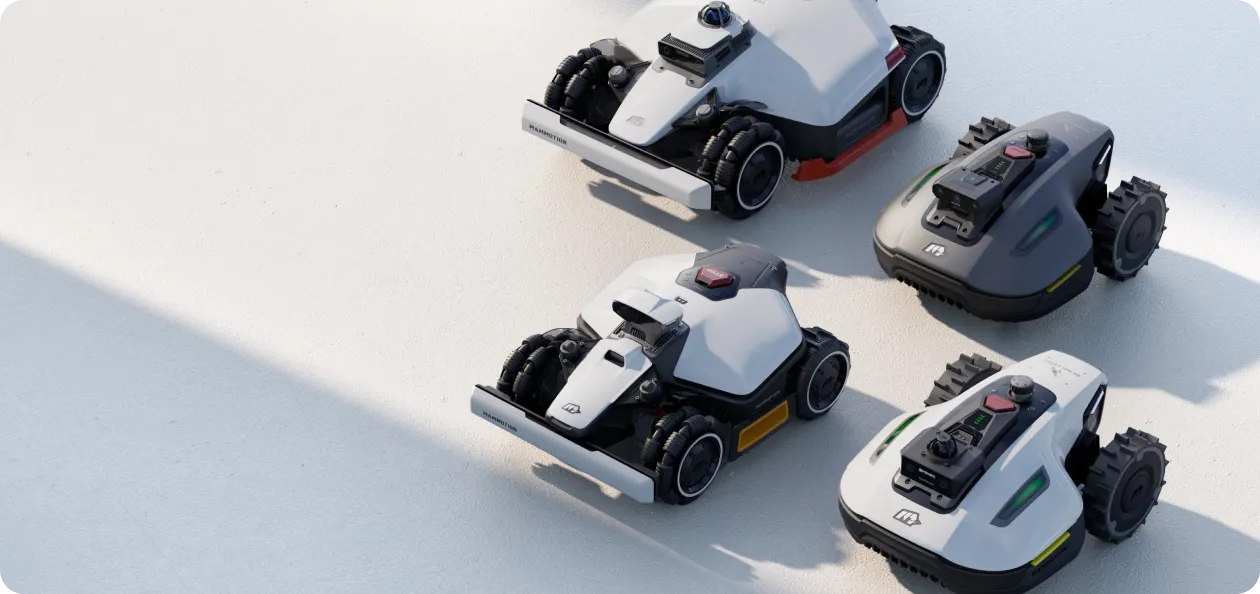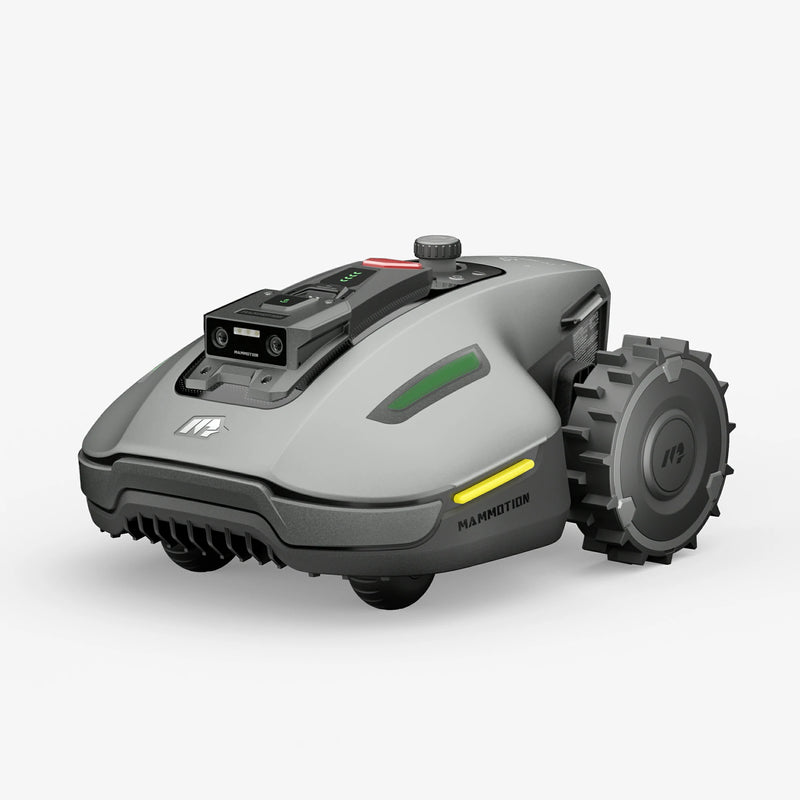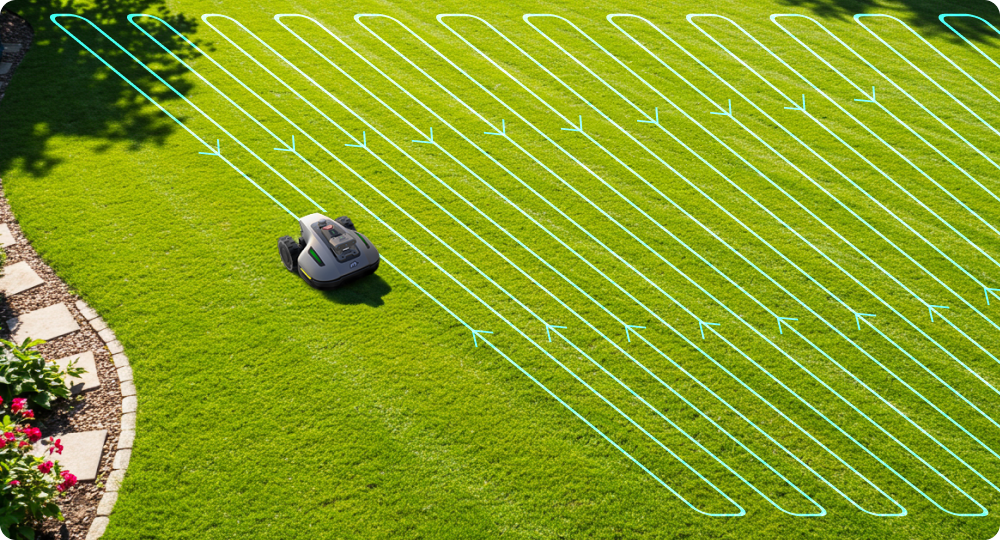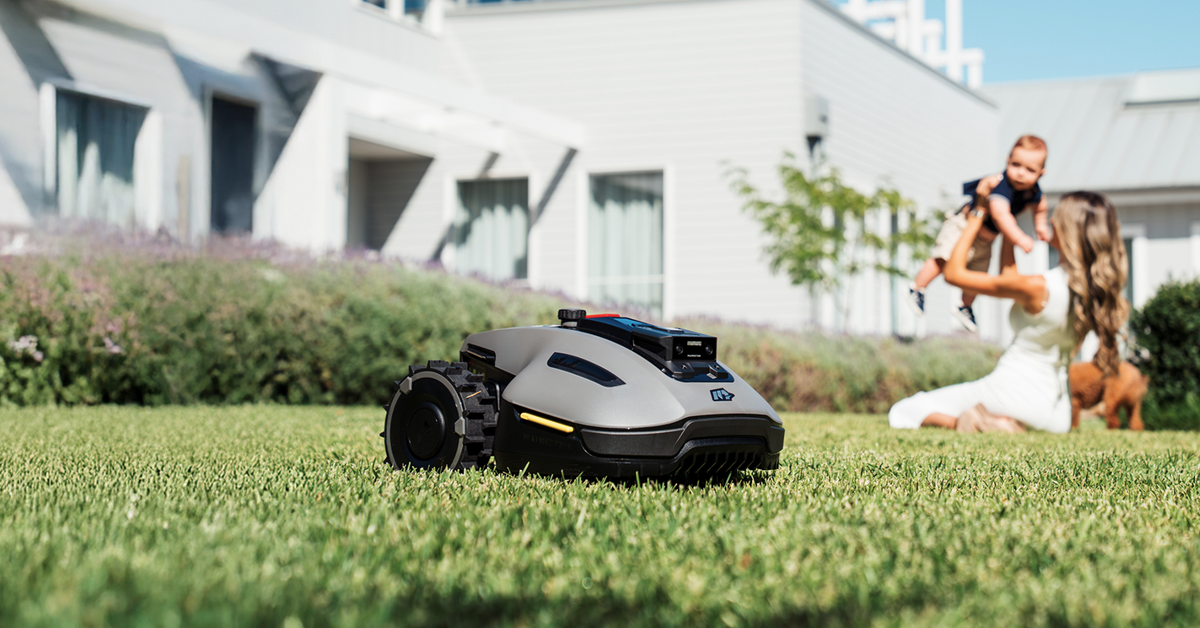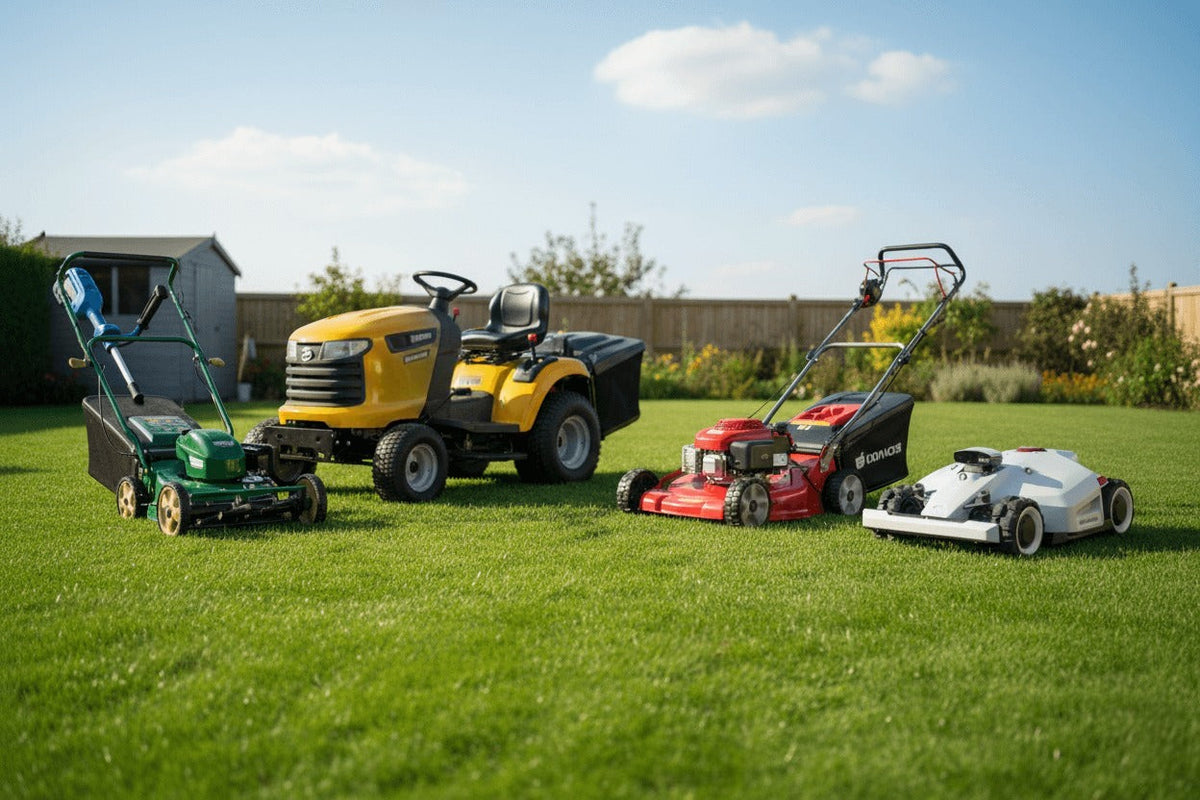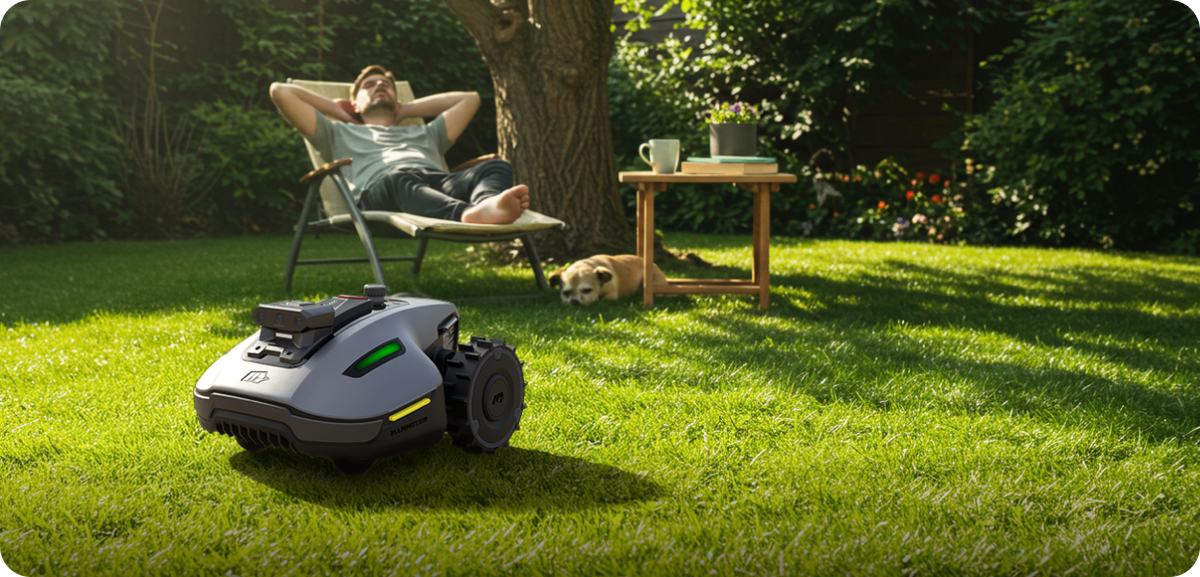If you’ve been researching robot lawn mowers, you’ve likely stumbled across one major concern: the boundary wire. For many first-time buyers, the thought of digging trenches around your lawn or managing a complex installation is a dealbreaker.
But the truth is evolving. In 2025, not all robot lawn mowers require a boundary wire. Advances in GPS, RTK positioning, AI mapping, and onboard cameras now allow some mowers to operate wire-free, giving homeowners more flexibility than ever before.
As someone with 30 years of experience in the lawn care industry, I’ve seen robot mowers transform from wire-dependent machines to intelligent, wire-free solutions. In this guide, we’ll cover:
- How boundary wires work and why they’re still used.
- Wire-free alternatives and the technology behind them.
- How to decide between wired, wire-free, or hybrid systems for your lawn.
By the end of this article, you’ll understand your options and be able to choose the mower that fits your yard, your lifestyle, and your budget—not just the latest tech trend.
What Is a Robot Mower Boundary Wire and How Does It Work?
For most traditional robot lawn mowers, the boundary wire is the invisible line that keeps your mower on track. It’s a low-voltage wire installed along the perimeter of your lawn—or around specific obstacles—to define where the mower can and cannot go.
Purpose of the Boundary Wire of the Robotic Mower
The boundary wire sends a continuous signal that the mower’s sensors detect. When the mower approaches the wire, it:
- Slows down
- Changes direction
- Stops to avoid crossing into unwanted areas
This system prevents your mower from entering flower beds, driveways, pools, or your neighbor’s yard. For over two decades, it has been the most reliable method to keep robot mowers contained.
Downsides of Robot Mower Wired Systems
While dependable, boundary wires come with some drawbacks:
- Installation is labor-intensive: Trenching around your lawn takes time and effort.
- Maintenance is required: A cut wire from garden tools or rodents can stop the mower from functioning.
- Limited flexibility: Move a flower bed or redesign your landscaping, and you may need to re-route or splice the wire.
For many homeowners, these challenges are the main reason they hesitate to invest in a robot mower.
Pro Tip: If you have a simple, flat lawn and don’t mind the initial installation, wired mowers offer consistent reliability, especially in areas with obstacles or dense tree cover.
Do All Robot Lawn Mowers Still Need a Boundary Wire in 2025?
The short answer: not anymore—but it depends on your lawn and needs. While many robot mowers still use boundary wires, advanced technology now allows for wire-free operation, offering flexibility and convenience that was unthinkable a decade ago.
Emerging Wire-Free Technologies of Robotic Mowers
Modern wire-free mowers rely on a combination of:
- RTK-GPS (Real-Time Kinematic positioning) for precise location tracking
- Onboard cameras and computer vision to detect obstacles
- Inertial sensors to navigate uneven terrain
- These systems can achieve sub-inch accuracy, keeping your mower within virtual boundaries without any physical wire.
For example, the Mammotion robotic mowers use RTK and AI mapping to create digital mowing zones, allowing homeowners to mow complex lawns without digging trenches.
Wire-Free Robot Mower Models in 2025
Wire-free mowers are no longer rare. Leading models from Mammotion, Husqvarna, and Segway include features like:
- Smartphone-controlled virtual boundaries
- Multiple mowing zones
- Custom schedules and slopes handling
These models appeal to homeowners who value flexibility and don’t want to commit to permanent wire installations.
Are Wire-Free Mowers as Reliable as Wired Models?
- While convenient, wire-free systems have limitations:
- Depend on clear satellite visibility
- Can be affected by dense trees, tall buildings, or inclement weather
- Typically have a higher price point
- May require software updates or occasional recalibration
Still, for many homeowners, the tradeoff is worth it for the freedom from wires and the ability to quickly reconfigure mowing zones.
Pro Tip: If your yard has open spaces, minimal shade, and reliable GPS reception, a wire-free mower can save you hours of installation time while providing advanced features and precision.

Choosing Between a Wired vs. Wire-Free Robotic Lawn Mower
Selecting the right robot mower isn’t just about avoiding wires—it’s about matching technology to your lawn, lifestyle, and budget. Here’s what to consider.
Factors to Consider When Choosing a Wired or Wire-Free Robot Lawn Mower:
1. Lawn Size and Layout
- Small, irregularly shaped, or obstacle-filled lawns may benefit from wired models for precise navigation.
- Open, medium-to-large lawns are ideal for wire-free mowers, which can easily adapt to changing zones.
2. Trees and Obstructions
- Wire-free mowers rely on GPS signals, which can be blocked by dense trees, buildings, or shade.
- Wired mowers perform consistently in shaded or obstructed areas.
3. Internet and GPS Availability
- Some wire-free models require Wi-Fi or 4G connectivity for cloud-based controls and software updates.
- Check if your yard allows line-of-sight to satellites for optimal performance.
Wired vs. Wire-Free Robotic Mower Comparison
|
Feature |
Wired Mowers |
Wire-Free Mowers |
|
Setup Difficulty |
High (manual installation) |
Low to Moderate (software setup) |
|
Flexibility |
Low (fixed zones) |
High (virtual boundaries) |
|
Signal Reliability |
Very stable |
Depends on GPS/signal conditions |
|
Price Range |
$800–$1,500 |
$1,800–$3,500+ |
|
Best For |
Complex lawns with obstacles |
Open lawns, frequent changes |
Pro Tip: If your lawn has frequent landscaping changes, a wire-free or hybrid setup might save time and headaches. If precision in tricky areas is your priority, wired mowers remain the most consistent choice.
Common Misconceptions About Boundary Wires and Robot Lawn Mowers
As robot lawn mowers gain popularity, many homeowners still have outdated or misleading assumptions about how boundary wires work. Let’s clear up the most common myths.
Myth 1: “You’re Stuck with the Wire Once It’s Installed”
Not true. Boundary wires are actually adjustable. You can:
- Splice and extend them if you expand your lawn.
- Re-route them when redesigning flower beds.
- Use accessories or apps with some models to create temporary no-go zones.
In other words, while installation takes effort, you’re not permanently locked into one layout.
Myth 2: “Wire-Free Mowers Are Always Better”
- Wire-free systems are convenient, but they’re not perfect for every yard.
- They can struggle with GPS interference under heavy tree canopy or near tall buildings.
- Wired models are often more affordable and more reliable in shaded, irregularly shaped lawns.
- The truth is, wire-free isn’t automatically better—it’s about choosing what works for your property.
Takeaway: Don’t buy into marketing hype. Both wired and wire-free systems have their place, and the best choice depends on your yard conditions, budget, and expectations.
Expert Tips for Getting the Most Out of Your Robot Lawn Mower Setup
Whether you choose a wired or wire-free mower, how you set it up and maintain it will determine your long-term success. Here are two expert tips I always share with homeowners—lessons most manufacturers gloss over.
1. Hybrid Solutions: Wire + Vision for Maximum Reliability
Some of the most advanced mowers now support hybrid setups. These combine GPS navigation with small sections of boundary wire for tricky areas, such as: Flower bed; Ponds or pools; Steep slopes
For example, the Husqvarna NERA series lets you use wireless navigation for open areas, while adding short wire loops for problem zones. This gives you the flexibility of wire-free mowing with the stability of wired boundaries where needed.
2. Best Practices for Boundary Wire Maintenance
If you do go wired, follow these pro tips to avoid downtime:
- Bury wires 1–2 inches deep to prevent cuts from aeration or edging.
- Use waterproof connectors for splices to avoid corrosion.
- Walk your perimeter once a season and test continuity—catching small breaks early saves big headaches later.
Pro Tip: Keep a few extra connectors and repair kits on hand. A broken wire mid-season can stop your mower cold, but most fixes take just minutes if you’re prepared.
Conclusion: Boundary Wires Are Optional—If You Choose the Right Mower
So, do all robot lawn mowers need a boundary wire? Not anymore. The industry has shifted, and today’s buyers can choose between:
- Wired models: Reliable, cost-effective, and ideal for shaded or complex yards.
- Wire-free models: Flexible, high-tech, and perfect for open lawns with good GPS visibility.
- Hybrid setups: A smart middle ground for homeowners who want the best of both worlds.
The key is to match the mower to your lawn layout, environment, and expectations. A wire-free mower might feel like the future, but if your yard is heavily shaded or irregular, a wired system may still deliver better consistency.
Either way, robot mowers have come a long way—and the right choice can save you hours of weekend mowing while keeping your lawn healthy and beautiful.
Final Tip: Before investing, evaluate your yard’s layout and conditions. The “best” mower isn’t the newest—it’s the one that works reliably on your grass.
Frequently Asked Questions
1. Do all robot lawn mowers still need a boundary wire?
No. Traditional models still use a buried wire, but many 2024–2025 models create virtual boundaries with RTK-GPS, cameras (vSLAM/AI), and inertial sensors—so no trenching. Examples include Mammotion, Segway Navimow, and several newcomers.
2. How accurate are wire-free (RTK/GPS) robot mowers?
Modern RTK systems routinely hit centimeter-level accuracy in open sky, which is tight enough for edges and complex zones when satellite visibility is good. Accuracy drops under heavy canopy or close to tall buildings, so yard conditions matter.
3. Will a wire-free mower work under trees or near buildings?
It depends on the sky view. Dense trees, sheds, and urban canyons can degrade GPS/RTK and camera mapping. In those yards a wired layout—or a hybrid setup that adds short wired loops in trouble spots—often proves more reliable.
4. Do wire-free robot mowers need Wi-Fi or cellular to run?
The mower can cut without internet once mapped, but Wi-Fi/4G improves app control, OTA updates, theft tracking, and remote troubleshooting. Several brands recommend stable connectivity for the best experience.
5. What’s faster to set up: wire or wire-free robotic mower?
Wire-free is usually quicker because you’re not trenching cable; mapping is done by driving or walking the mower around the perimeter in the app. Expect wire installs to take hours for a typical yard; virtual setups go faster but still require careful mapping and calibration.
6. Are wire-free robot mowers more expensive?
Generally yes. You’re paying for RTK base stations/antennas, cameras, and onboard compute. Entry wire-based models often start under $1,500, while capable wire-free systems commonly run higher. Review coverage and pricing snapshots reflect that premium.
7. How do these mowers handle edges, beds, and no-go zones without wire?
Apps let you draw virtual boundaries, islands, and keep-out zones; some add special “ride-on” or enhanced edge modes to skim borders more cleanly. You can update zones without digging—handy if you move a bed or add a play set.
8. What if my landscaping changes after robot mower installation?
With wire-based systems you’ll re-route or splice the wire. With wire-free, you just remap or edit polygons in the app. That flexibility is a core reason many homeowners go wire-free.
9. Are there brand-new wire-free options I should know about in 2025?
Yes—new launches keep coming. For example, Mammotion announced LUBA mini lidar models with RTK + Vision + Lidar in 2025, underscoring how mainstream wire-free has become.
10. Is a wired mower still the better choice for some yards?
Absolutely. If you have heavy tree cover, tight passages, or frequent GPS shadowing, a wired mower can deliver steadier boundary adherence for less money. Hybrid-capable platforms (e.g., RTK+Vision) let you choose the best mode per yard.










